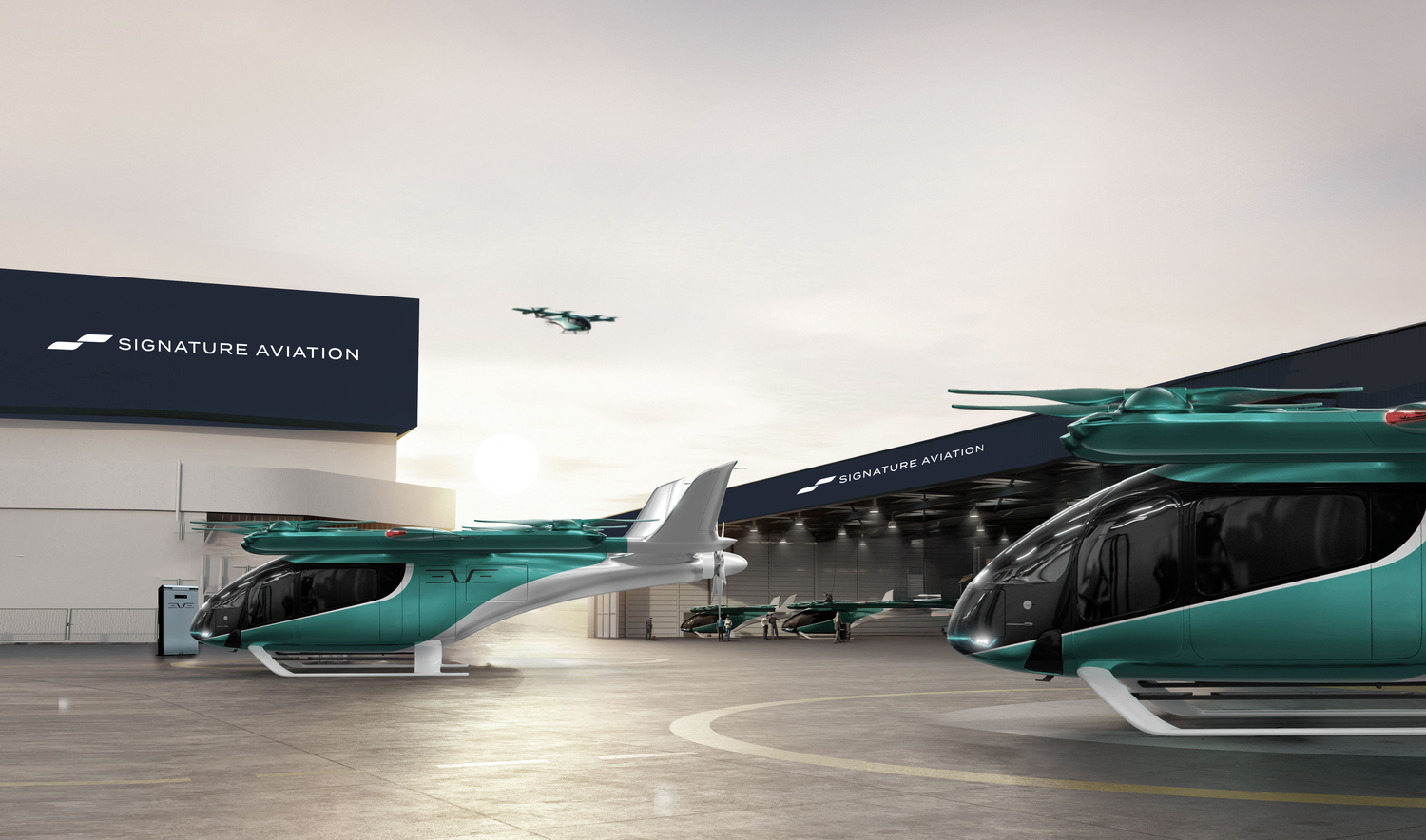Source: Embraer
- Agreement includes exploration of necessary requirements for safe, scalable ground operations for AAM, along with intent to integrate Vector, Eve’s urban traffic air management software.
Eve Air Mobility, a global leader in manufacturing and providing services for electric vertical take-off and landing (eVTOL) aircraft, and Signature Aviation, the world’s largest network of private aviation terminals, have signed a Memorandum of Understanding (MoU) to research ecosystem requirements as well as the ground services necessary for safe, efficient and scalable Advanced Air Mobility (AAM) ground operations.
“Following the rollout of our first full-scale eVTOL prototype, we continue to build on that momentum and are looking forward to teaming with Signature Aviation to support eVTOL operations,” said Luiz Mauad, vice president, Services, Operations Solutions, Strategic Design & Ecosystem at Eve Air Mobility. “Eve and Signature will leverage the companies’ combined global presence and experience in servicing aircraft and creating seamless passenger experiences. Signature Aviation’s insight into ground services needs, local knowledge, private aviation terminal operations and passenger services will inform the procedures and ecosystem needed to accelerate preparations for eVTOLs to launch and scale.”
The agreement brings together two seasoned, major players in the global aerospace industry: Eve Air Mobility’s expertise as an eVTOL manufacturer and Signature Aviation’s global network of private aviation terminals. As part of the MoU, the two companies will also explore potential future commercial partnerships.
“The announcement of our partnership with Eve adds to a transformative year for Signature, while also reinforcing our commitment to shaping the future of aviation through our sustainability initiatives,” said Derek DeCross, chief commercial officer, Signature Aviation. “We’re always looking ahead to create and deliver exceptional experiences for our guests, and working towards the most comprehensive ground infrastructure for eVTOL aircraft is a major part of that mission. This collaboration will bring together our experience, resources, and creativity to find the most effective path towards innovative, safe, and scalable ground operations for advanced air mobility.”
In addition to the MoU, the two companies have signed a Letter of Intent (LOI) for Vector, Eve’s urban air traffic management software. Vector is an agnostic software solution designed to safely address the unique air traffic and network management challenges of current and future AAM operations. Vector will support reliable, efficient and scalable fleet and vertiport operations, enabling operators to adapt as the industry grows. The company is advancing towards an operational version of the software which customers can now test and trial to help progress the market.
Eve recently announced the launch of its fully integrated after market services portfolio for efficient and safe urban air mobility operations. Eve TechCare is a pioneer all-in-one suite of solutions designed to streamline eVTOL operations by providing the industry’s most comprehensive services, expert customer support, and cutting-edge operational solutions. Backed by Embraer’s 55 years of history and aerospace industry expertise, Eve TechCare offers a unique way of serving customers with a global footprint and local presence. The aftermarket portfolio consists of technical support and solutions, MRO services, parts and battery solutions, as well as training services and flight operation solutions, which operators will access through a digital platform. Eve TechCare’s service and support solutions will cover all the operational aspects necessary to ensure the daily eVTOL operation.
With letters of intent for 2,900 eVTOLs, Eve’s aircraft utilizes eight dedicated propellers for vertical flight and fixed wings to fly in cruise, with no change in the position of these components during flight. The concept includes an electric pusher powered by dual electric motors that provide propulsion redundancy with the goal of ensuring the highest levels of performance, safety and dispatch reliability and low cost of operation.

